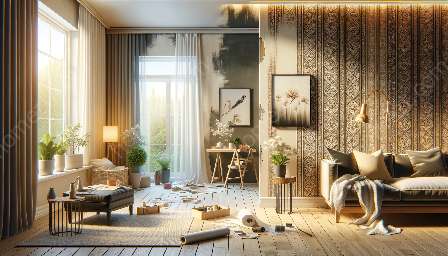When it comes to updating the look of your home, wall painting and wallpapering are two popular choices. Whether you're looking to create an accent wall or give a room a complete makeover, having the right tools is essential to achieving a professional finish. In this article, we'll explore the essential tools for both wall painting and wallpapering, providing you with everything you need to know to get started.
Wall Painting Tools
Before you begin any wall painting project, it's important to have the right tools on hand. From paintbrushes to rollers, here are the essential tools you'll need for a successful painting project:
- Paintbrushes: A high-quality paintbrush is essential for cutting in around edges and corners. Look for a brush with synthetic bristles for a smooth finish.
- Rollers: A roller is perfect for covering large areas quickly. Choose between foam, mohair, or microfiber rollers, depending on the type of paint you're using and the texture of your walls.
- Paint Tray: A paint tray is essential for loading paint onto your roller. Look for a sturdy, disposable tray or a reusable metal tray for easier clean-up.
- Painter's Tape: Use painter's tape to mask off areas that you don't want to paint, such as moldings, trim, and ceilings.
- Dust Sheets: Protect your floors and furniture with dust sheets or drop cloths to catch any paint spills or splatters.
- Sandpaper and Spackle: Before painting, prepare your walls by sanding any rough spots and filling in any holes or cracks with spackle.
- Paint Roller Extension Pole: If you're painting a large area or ceilings, a roller extension pole will make the job much easier and more comfortable.
- Paint Edger: For clean and straight lines along ceilings and trim, a paint edger tool can help you achieve a professional finish without needing to use painter's tape on every edge.
Additional Wall Painting Tools
Depending on the complexity of your project or the specific techniques you're using, you may also need some additional tools such as a paint sprayer, paint pads, and a paint mixer. These can make the painting process more efficient and help you achieve different finishes and effects.
Wallpapering Tools
Wallpapering can add texture, color, and pattern to your walls, creating a unique and personalized look for any room. Here are the essential tools you'll need for a successful wallpapering project:
- Wallpaper Smoother: Use a wallpaper smoother to smooth out any air bubbles and ensure the wallpaper adheres evenly to the wall.
- Retractable Knife: A retractable knife is perfect for cutting wallpaper to the correct length and trimming excess paper around edges and corners.
- Seam Roller: A seam roller is essential for pressing down and smoothing out the seams between strips of wallpaper. This helps to create a seamless and professional finish.
- Wallpaper Scissors: A pair of sharp wallpaper scissors is essential for cutting around obstacles such as outlets, switches, and moldings.
- Bucket and Sponge: Use a bucket of water and a sponge to activate pre-pasted wallpaper and clean up any adhesive residue.
- Plumb Bob and Chalk Line: These tools can help you ensure that your first strip of wallpaper is hung straight and level, providing a good starting point for the rest of the room.
Tips for Choosing the Right Tools
When selecting tools for your wall painting and wallpapering projects, it's important to consider the specific requirements of your project, as well as the type of walls and surfaces you'll be working with. Here are a few tips to guide you in choosing the right tools:
- Consider the Surface: Different surfaces may require different tools. For example, rough textures may work better with certain rollers or brushes, while delicate wallpapers may require specific smoothers and cutting tools.
- Quality Matters: Investing in high-quality tools can make a big difference in the outcome of your project. Look for brushes, rollers, and cutting tools that are durable and designed for the specific task at hand.
- Compatibility with Materials: Ensure that your tools are compatible with the type of paint or wallpaper you'll be using. Some tools may be more suitable for certain materials or finishes.
- Ease of Use: Consider the ergonomics and ease of use of each tool, especially if you'll be working on a large or time-consuming project. Comfortable handles and adjustable features can make the job more enjoyable and efficient.
Conclusion
Having the right tools for wall painting and wallpapering is essential for achieving a professional and polished look in your home. By understanding the essential tools and equipment needed for each type of project, as well as the tips for choosing the right tools, you can confidently tackle your next interior decor or homemaking project. With the right tools and techniques, you'll be able to transform your walls and create a stunning look that reflects your personal style and enhances the overall aesthetic of your home.


